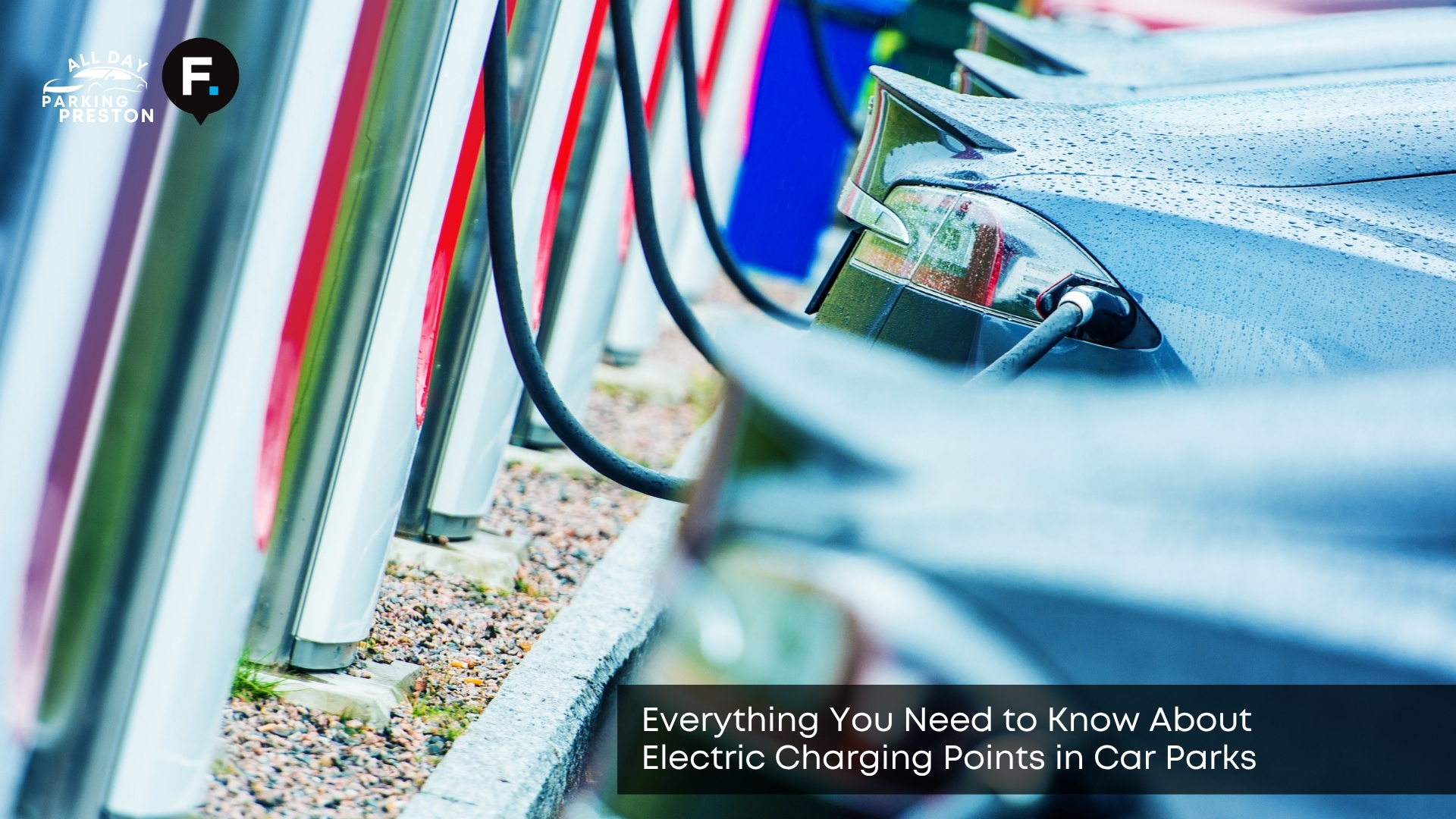Electric charging points in car parks have become more common across the UK, making life easier for electric vehicle (EV) drivers. As more people switch to EVs, the need for easy and reliable charging access has grown quickly. Car parks now play a big role in supporting greener travel with on-site electric charging stations. But what do you need to know before you plug in? This guide covers it all.
What Are Electric Charging Points in Car Parks?
Electric charging points in car parks are dedicated bays fitted with chargers to power up electric vehicles while they’re parked. These may be fast, rapid, or standard chargers depending on the location and setup. Many are found in supermarkets, retail, or train station car parks, offering drivers the convenience of charging while doing everyday tasks. Knowing what type of charger is available helps you plan better.
How Do You Use an EV Charging Station in a Car Park?
You use an EV charging station by parking in a marked EV bay, plugging in your vehicle, and activating the charge via app, contactless payment, or membership card. Each station may have slightly different steps depending on the provider, but most are clearly labelled. Always follow the instructions on the screen or the unit itself. Once you get used to the process, it becomes second nature.
Do You Have to Pay for Charging in Car Parks?
Yes, most car parks charge for electricity used at EV points, though some offer free charging for a limited time or with a parking stay. The cost depends on the speed of the charger and the operator. Prices are typically quoted per kilowatt-hour, and some may include connection or idle fees. Understanding the pricing structure can help you choose the best spot for value and speed.
Are All Car Parks Equipped with Electric Charging Points?
No, not all car parks currently have electric charging points, but the number is growing quickly. Locations in city centres, airports, and supermarkets are more likely to offer EV charging. Many councils and private operators are upgrading their facilities to meet rising demand. A little research before setting off can save you time hunting for a charge.
How Can You Find a Car Park with EV Charging?
You can find EV charging car parks using apps like Zap-Map, PlugShare, or Google Maps, which show live availability and charger types. These tools let you filter by speed, access, or payment method. Some car park operators also show charger locations on their websites, or you can check a Preston parking guide for trusted options across the city. With these tools, it’s easy to stay powered up wherever you’re heading next.
What Are the Different Types of Chargers You’ll See?
You’ll typically see three types of chargers: slow (up to 3 kW), fast (7 kW to 22 kW), and rapid (43 kW to 350 kW). Slow chargers are suitable for overnight use. Fast chargers are better suited for short shopping trips, while holiday EV parking options often support slower overnight charging. Rapid chargers give a quick top-up in 30 minutes or less. Knowing the difference helps you match the charger to your vehicle and your schedule.
Can Anyone Use the EV Charging Bays in Car Parks?
Only drivers with electric vehicles should use EV charging bays, and some car parks enforce this rule with fines or barriers in place. Misuse of these bays by petrol or diesel vehicles, known as ICE-ing, can lead to penalties. Always check signage for any local rules or time limits, especially if you’re unsure how long to stay after your vehicle finishes charging. Respecting these spaces helps ensure access for everyone who needs a charge.
Is It Safe to Charge Your Car in a Public Car Park?
Yes, charging your car in a public car park is generally safe, especially when using a recognised charging network. Stations are built to safety standards and are tested regularly. Please remember to lock your vehicle and take your valuables with you as usual. This adds peace of mind while your battery fills up.
Why Do Charging Points Matter for the Future of Parking?
Charging points are reshaping how car parks are designed, used, and valued. With the rise of EV adoption, car parks equipped with charging points are perceived as more modern, eco-friendly, and convenient. They’re becoming essential for businesses and local councils trying to meet carbon goals. As this shift continues, EV charging will likely be the new normal.


Leave a Reply